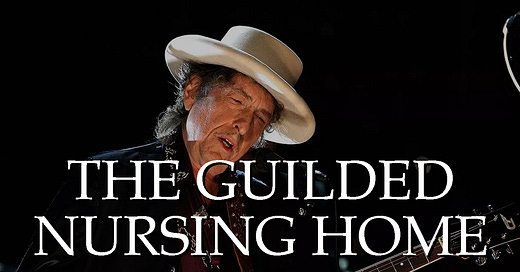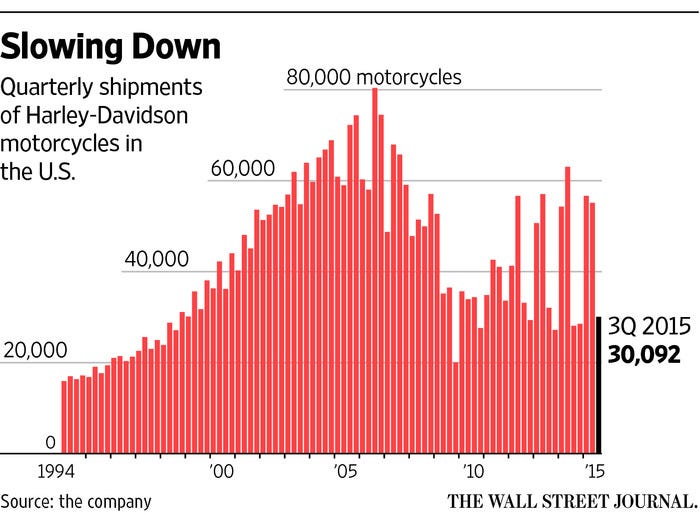I’ve been trying. and failing, to write something coherent and cohesive about The Baby Boomers, and the surreal state of people over 65 in general, for the last few months. The most success I’ve had so far have been my “Boomer Truth” Radio shows, after realising Substack is actually an idea platform for radio (you should check out Starman Radio if you haven’t.) Within the music that defined the teens and early twenties of the current crop of retirees you get a sense that boomerdom is hard to write about accurately is because being a baby boomer is a feeling. It is a state of mind. Their self identity is emotional and experiential in a way previous crops of “old people” were not, and the contrast is jarring.
Previous generations within living memory were defined by the dignity but relative material impoverishment of old age and retirement. Multi generational households provided the mechanism to elevate the problems of no longer having an income, as working age people with jobs and families were rightly seen as those who should have the most access to capital.
Currently, this is turned on its head, with the baby boomer generation using a generational Cantillon Effect to amplify their wealth at the expense of those who came after them. Headlines illustrating the fact that Boomers hold more than half of American wealth the subsequent generations have all been poorer, millennials substantially so, don’t quite capture the ground level feeling of vastly wealthy retirees warping parts the luxury market around them.
Consumerism is one of the major gods of the pantheon of Boomerism, being a generation raised and cushioned by other people’s riches at every stage in their lives, and the shape of consumerism is largely the shape of the culture in western nations. One generation propping up much of our consumer cultural background noise will create a large paradigm shift once they are gone—one that I think will be for the better—as the promises of materialism slide out of views.
Subsidised retirees being pampered by the very working age people who are subsidising them is making hatred of the elderly rife in western society—and it leaves what we think of as perennial “boomer brands” that cater to this aging but well off consumer cohort on shaky ground.
This is best illustrated with two dyed in the wool boomer companies: Harley Davidson and Gibson Guitars.
Harley Davidson
The Motorcycle company Harley Davidson seems to have accidentally placed itself as the perfect test case for the phenomenon of Boomer and Bust, reaching peak sales in 2007, just before the financial crisis, but just in time to exploit the midlife crisis of their customer base.
In the subsequent years, the company has seen nothing but sales decline in the US market and almost non existence in the foreign market. The lack of an export market is due in part to The Federal Government propping up Harley Davidson’s outdated business model via steep import taxes on large displacement European and Japanese bikes—tariffs that saw retaliation—and direct tax breaks / federal assistance to the company. This left them without competition, selling lazy, legacy bike designs that quite frankly get laughed out of the room outside of America—especially at their price point. I can’t think of something more baby boomer than fake American Excellence propped up by endless government subsidy, very fitting. Harley Davison is a bard made for boomers to sit on and feel like they are James Dean—and not much else.
Harley Davidson is such an extreme example it has been relatively well publicised, and it seems that in protecting Harley Davidson the Federal Government helped destroy the motorbike segment in the U.S. as a whole:
“In 1985, the year before Harley went public, the median motorcycle owner in the US was 27 according to the Bureau of Transportation Statistics. By 2018, that median age had risen to 50. The average age of Harley-Davidson riders has mirrored that increase. In 2008, the last year that it openly publicised this information, the average age of a Harley Davidson rider in the US was 48 years old. This is a big problem for Harley and one that is proving very difficult and expensive to overcome.
The core customer for Harley-Davidson is the well-heeled baby boomer. Unfortunately, these customers are getting older and are nearing the end of their biking years. The millennials who are filling that void have a completely different view of what they want from a motorcycle.”
-Is Harley-Davidson Heading for a Crash?, Chris Andersen, CompanyDebt
The grim reality for the brand is this: their core demographic have become incontinent septuagenarians who can’t so much as hold a dirt bike up, never mind a heavy road bike built like it’s still 1964. This is what malinvestment looks like in practice, the inevitable end result of keeping a motorbike brand on figurative life support who’s customer base are now starting to need literal life support.
This trajectory is not unique, and many equally lazy companies are due a fall of the same magnitude. Which brings us to our next example:
Gibson Guitars
Specifically, Gibson USA. Theirs is a position similar Harley-Davidson’s twenty years ago: they are milking an demographic of aging baby boomers who are willing to spend vast sums of money to buy things they wanted when they were seventeen. They may be unable to ride a motorbike anymore, but they sure can pay $3000+ for a “standard” Les Paul USA guitar (and $300 to set it up so it’s actually playable.)
Gibson almost collapsed in 2018, partly due to their attempts to mitigate this time bomb within the core business model, but they did so incompetently—going on a debt funded company buying spree and being declared temporarily insolvent. Since then it has been praised for refocusing on its core business model, but that “core business model” of Gibson is rinsing Baby Boomers and late Gen X ‘whales’ for brand uplifted instruments with notoriously bad quality control.
Gibson wa also lucky in that they were buoyed by the lockdowns, just as Harley Davidson was further damaged by them, as playing guitar is something you can do in “the pod.” There has also been something of a guitar boom, during that period, but you will struggle to find an artist under the age of fifty who has a Gibson signature model. Indeed, Gibson has been losing endorsees to the likes of Shecter.
Focusing on their imported guitars, in the form of Epiphone, is one way to cushion this boomer consumer time-bomb, but without the prestige of Gibson USA and without a stable of young artists to promote them, the relevance of Gibson USA as a brand will die with The Boomers. Being just another import guitar brand in a sea of very competitive import guitar brands, albeit a big one, is a recipe for slow death if main your target audience—guitar players that aren’t dead yet—view you as an over priced “boomer brand” which is deeply uncool.
This is not merely an image problem, as overwhelmingly their designs hark back to the 50s and 60s with very few exceptions. They, like Harley Davidson, rest firmly on their laurels of past glory, even going so far as to attack companies who make similar legacy style models. For the players under forty especially, the brand has a negative connotation not helped by the fact that Gibson, like all legacy brands, has also attempted to turn itself into a “lifestyle brand,” selling $1,500 3XL leather jackets to the same “core audience” who can no longer climb on a Harley.
Large scale trends are best demonstrated by specific examples, and I believe that Harley Davidson and Gibson USA will end up in business and marketing textbooks as clear examples of how formerly iconic brands can die with their legacy audience. Consumerism itself is shifting, with the wealthy in western nations paying small fortunes in city centers to look like they are living a thrifty lifestyle. The brash bragging rites of the boomers is what they are rebelling against in their own minds, and nothing could be further from the tastes of the tech start-up organic vegan ‘whales’ of the future than strapping on an overtly expensive Gibson electric guitar and climbing on a Harley Davidson.
The eternal twilight of the boomer is finally coming to an end, and with it we might finally find a way out of the stagnation that is consumerism anchored on the myth of the 1960s.








Behind the scenes back in the mid 2010's Gibson was trying hard to impress itself in the consumer space. They opened a silicon valley office and flew engineers all over the world to work on lackluster projects that really went nowhere. Wireless guitars with embedded computers talking to an iPhone, all sorts of stuff. The CEO, Henry J was obsessed with Steve Jobs. Gibson forged relationships with Apple and Broadcom to work together towards interoperability of audio time synchronization over wireless networks so they could change the way that live audio and consumer audio could communicate with each other. It never took off and failed to sell any new products. They went bankrupt, closed the offices and I started a goat farm, got married and had kids after spending the better part of my youth on such endeavors with Henry J. As well as another long stint with another stupid company prior that works in much of the cinema and media Hollywood and news junk space. Avid Technology. Overpriced stuff really. But these are the tools that make the Boomer entertainment world go round.